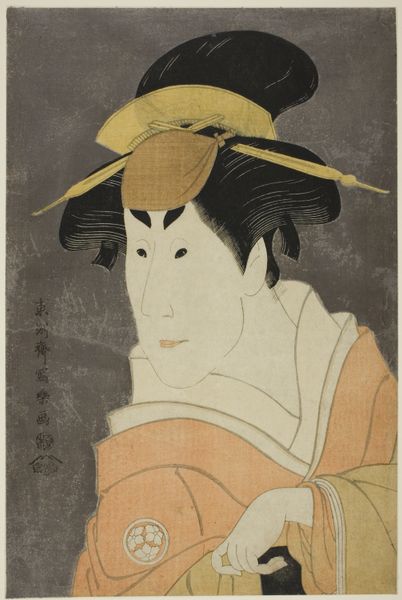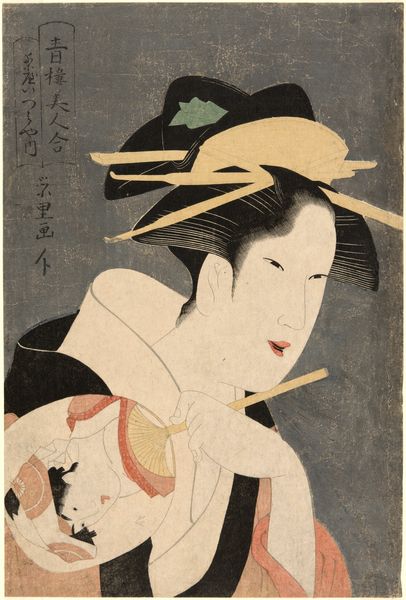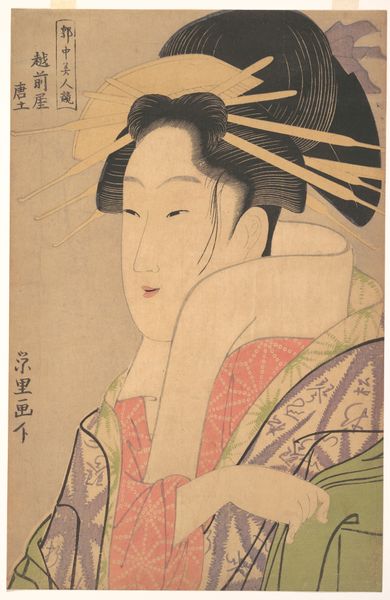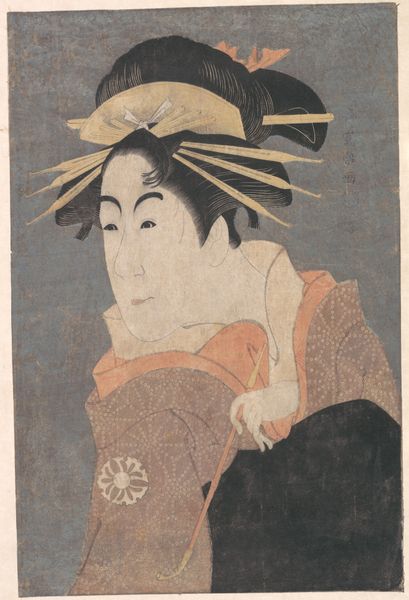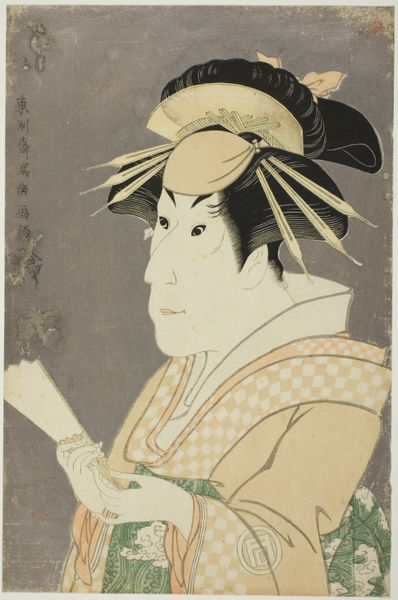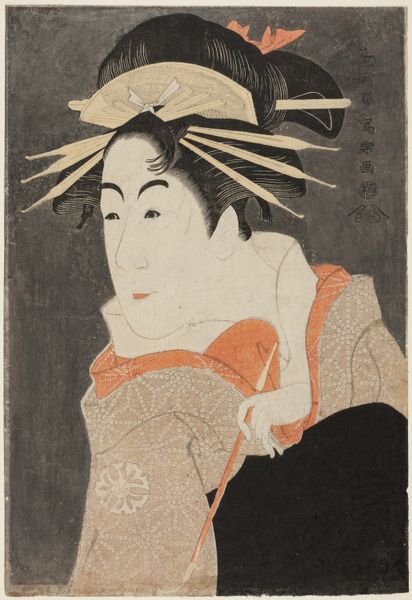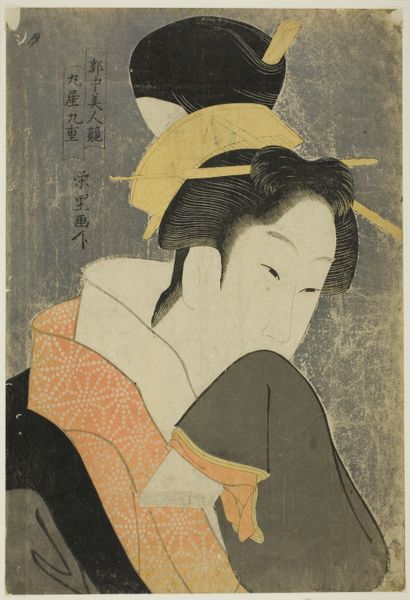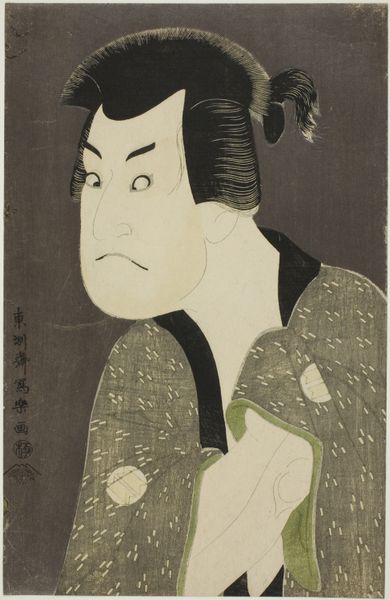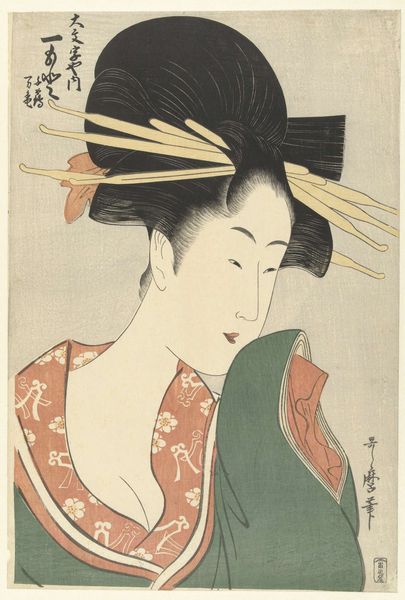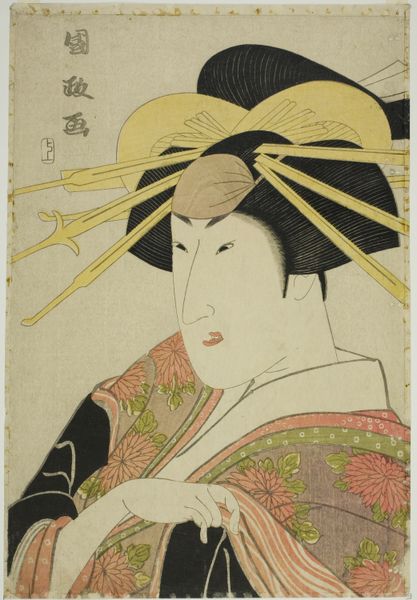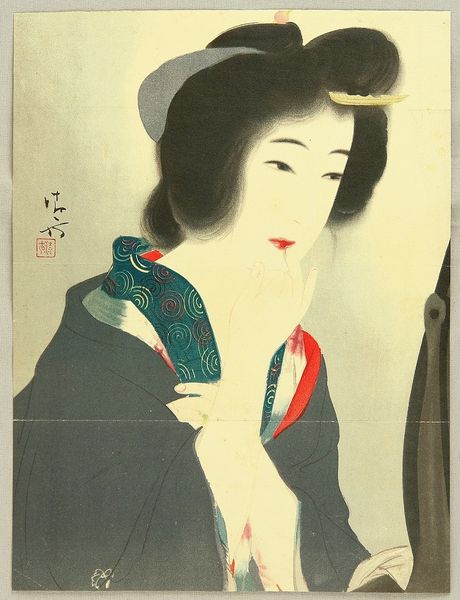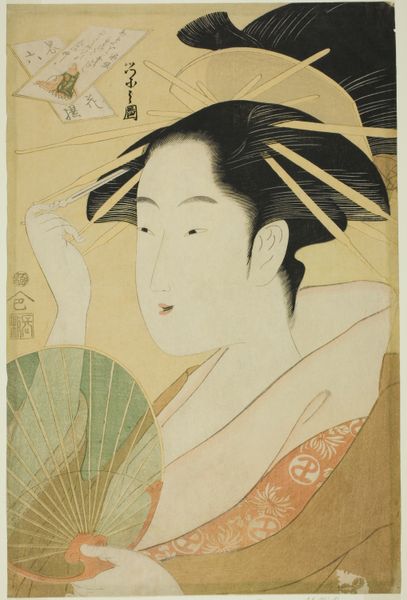
print, woodblock-print
#
portrait
# print
#
caricature
#
caricature
#
ukiyo-e
#
woodblock-print
#
line
Copyright: Public domain
Curator: The intensity of the gaze in this print is striking. Editor: Absolutely. This woodblock print, "Iwai Hanshirō IV as the wet nurse Shigenoi," was created in 1794 by Tōshūsai Sharaku. Sharaku emerged and disappeared within a short ten-month burst of activity, which makes him all the more fascinating. Curator: It’s hard not to notice the rather exaggerated features. It feels almost… critical. Do you think the artist aimed for pure representation or was there a deeper purpose? Editor: Well, Sharaku was working in the ukiyo-e tradition, often depicting actors and courtesans, but he diverged by highlighting distinctive, even unflattering, characteristics. In this particular image, we see the actor Iwai Hanshirō IV playing the role of a wet nurse. This type of cross-dressing role, and its subsequent depiction, invites consideration of performance, gender roles, and perhaps even social commentary on the artifice of theatre. Curator: I see it as a challenge to conventional beauty standards. It's definitely provocative, pushing boundaries. It makes you consider how much an artist can and should reflect versus subvert expectations within a specific social climate. Was Sharaku trying to provoke? Editor: Some art historians would agree with you. But we must consider the theatrical world of the Edo period itself—kabuki theatre involved exaggerated movements, costumes, and makeup. This portrait would’ve been intended for the theatre audiences and was a promotional piece to generate ticket sales. Its purpose served that aspect. Curator: A point well-taken, although for a contemporary audience unfamiliar with kabuki conventions, I imagine, it continues to have a strikingly modern, edgy feel. Editor: Exactly. Sharaku's approach gives it lasting power. It remains visually arresting after all these years. Curator: Yes, and a potent reminder that artistic interpretation can be as valuable as historical reconstruction.
Comments
No comments
Be the first to comment and join the conversation on the ultimate creative platform.
